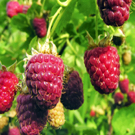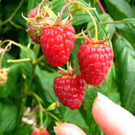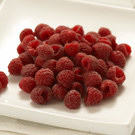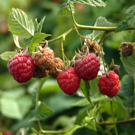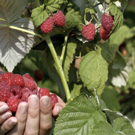Raspberry Plants for Sale
Raspberry plants are a deciduous bush from the Rosaceae family that grow up to 6 feet high. They are classified into two different categories. Floricanes (Summer bearers) that produce one crop during the summer months and primocanes (ever bearers) that produce two crops. One smaller crop in the late Spring/early Summer and a larger crop in the Fall. The Summer bearers will produce on the floricane which is a two year or older cane and ever bearers can produce on a primocane (a one year old cane) as well as the floricane. We have only the best raspberry plants for sale. Raspberry varieties are available in four different colors, red, yellow, black and purple. Buy fruit trees online, both big and small, at Willis Orchards.
(Click for more)Various Hybrid Raspberry Plants
Red Raspberry Plants
Raspberries are a small native American flowering bush or trailing vine. The berries can be red, black, or golden. The red raspberry is what people traditionally think of as a raspberry. They are a member of the same family as blackberries, however, they are a bit different. There are subtle differences in the berry plants, but a more distinct difference in the flavors. Raspberries are touted by many as the best for making jam or jelly. The plants are easy to grow and are excellent for use in cooking or fresh eating. Raspberries are traditionally thought of as a northern fruit, however, they will grow and fruit in the southeast also. We have selected a few of the top raspberry varieties for you to grow in your home orchard. Find quality raspberry plants for sale online at Willis Orchard Company!
(Click for more)



